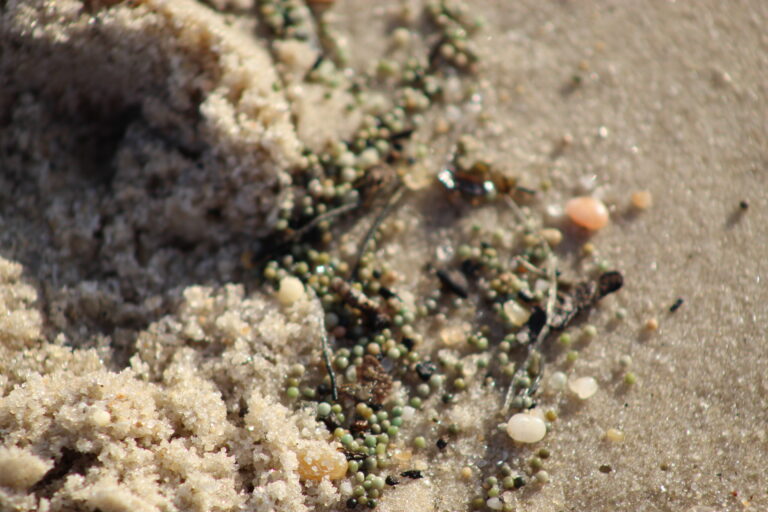Horseshoe Crabs, Red Knots And Humans: How One Species Affects Them All
https://capemaywhalewatch.com/blog/horseshoe-crabs-red-knots-and-humans-how-one-species-affects-them-all/

Image 1: Horseshoe crab eggs along the Delaware Bay. Photograph taken by Madison Olszewski
The red knot is a shore bird species that visits the shores of Cape May on its migration route. This species has the longest migration route of any species that visits our shores. It travels from tropical and temperate conditions in the winter all the way to the Arctic for breeding, a journey that totals more than 19000 miles (Schwartz, 2016). In order to survive this journey the red knot makes a series of stops along the way in order to refuel. The red knot’s stop at the Delaware bay is the most crucial as it is the final stop before they arrive in the Arctic. The red knot when stopping at the Delaware Bay area is extremely dependent on horseshoe crab eggs as a food source. They need a sustainable food source to help them refuel on their long journey. This stopover is also important because once they reach the harsh conditions of the Arctic, food is low and they must be in good health in order to successfully breed. Horseshoe crab eggs are easy to digest and very high in lipid content which is essential for the red knot to survive it’s intense migration route. The red knot is currently listed as near threatened on the IUCN red list and unfortunately, their populations are continually decreasing.
In recent years, horseshoe crabs have been harvested for much more than just bait.
Horseshoe crabs are extremely important for medical research and development. Horseshoe crab blood has incredible antibacterial properties. Horseshoe crab blood is a very distinct blue color which is caused by hemocyanin which is copper based and helps transport oxygen throughout the horseshoe crabs body (Luntz, 2014). Amebocytes play an integral role in fighting off infections in invertebrates but the horseshoe crab has very specialized and effective amebocytes. Their amebocytes are fast reacting and can effectively react in 45 minutes, whereas in mammal species the reaction could take around two whole days (Luntz, 2014). This fast reaction is due to coaglun and this chemical has been utilized for medical testing such as testing vaccines. This has led to the harvesting of a quarter of a million horseshoe crabs.

